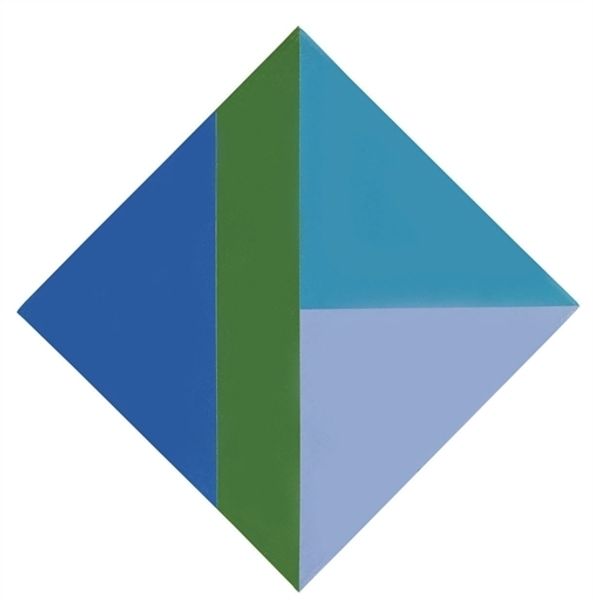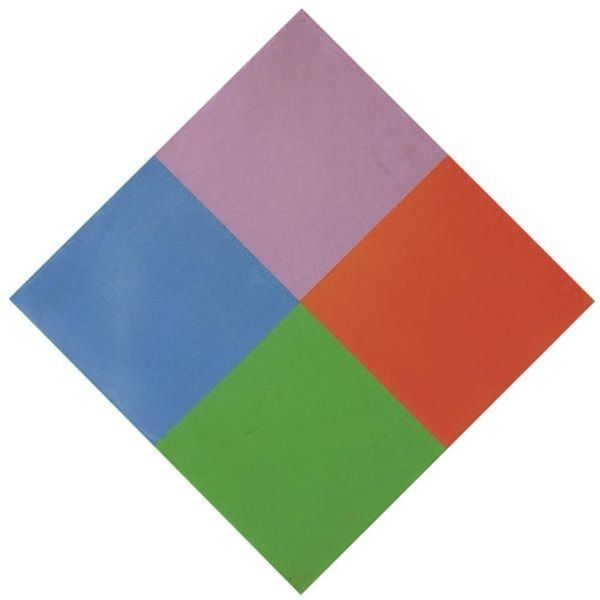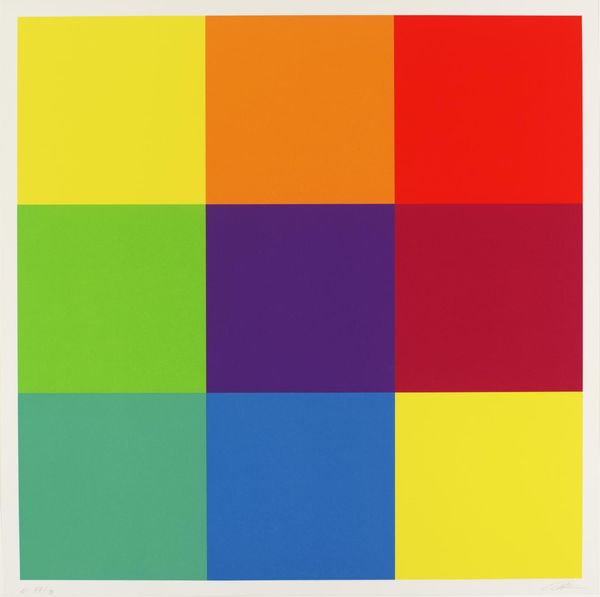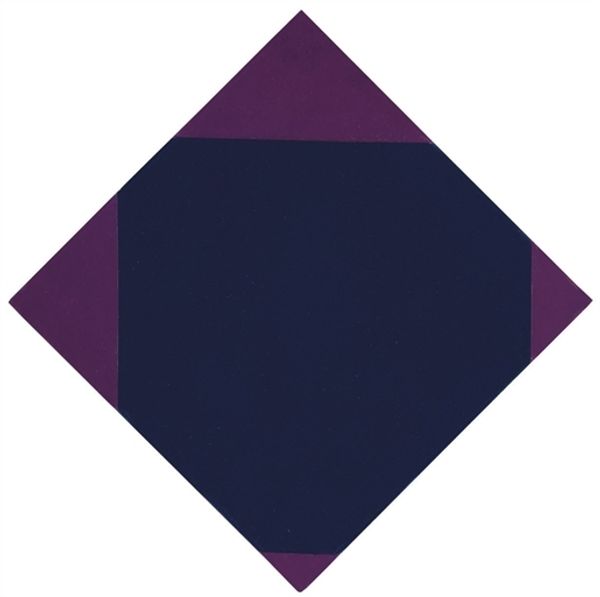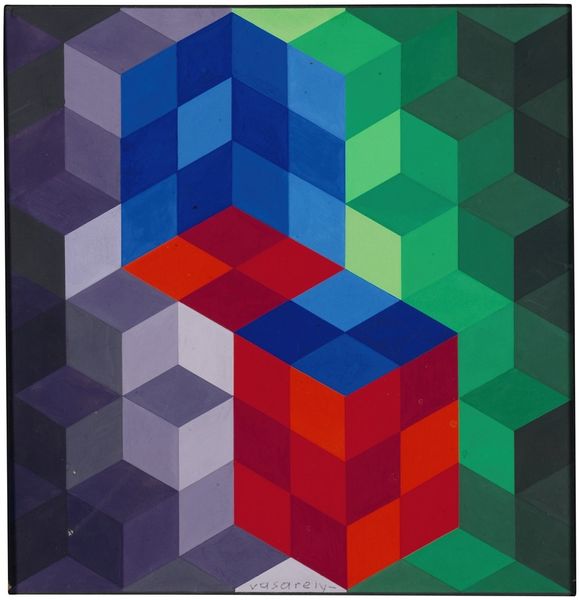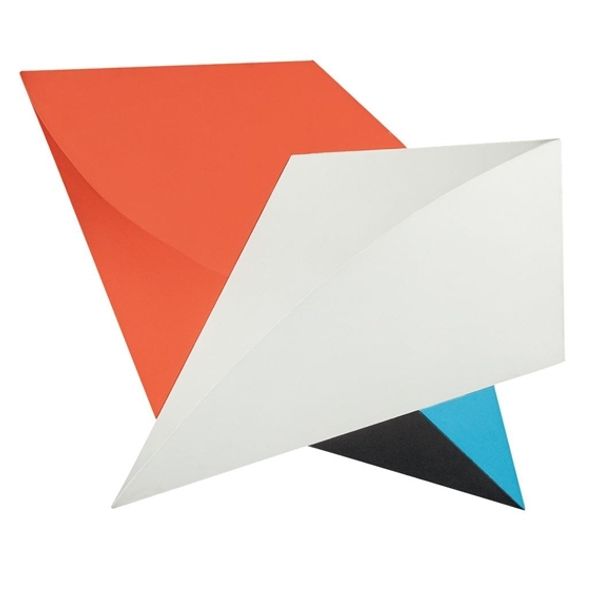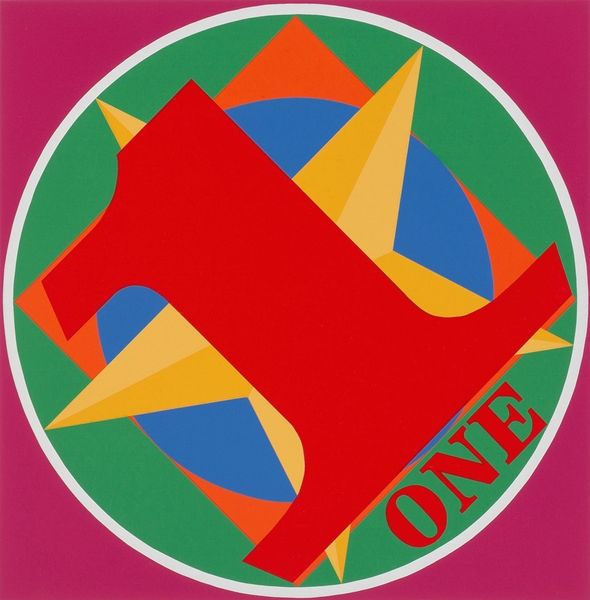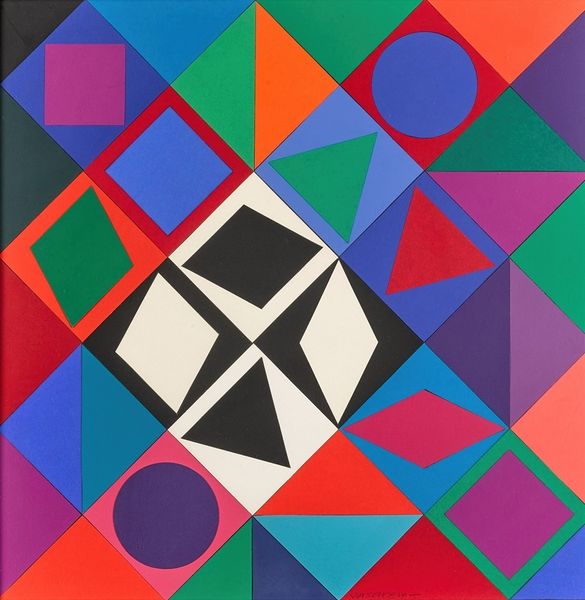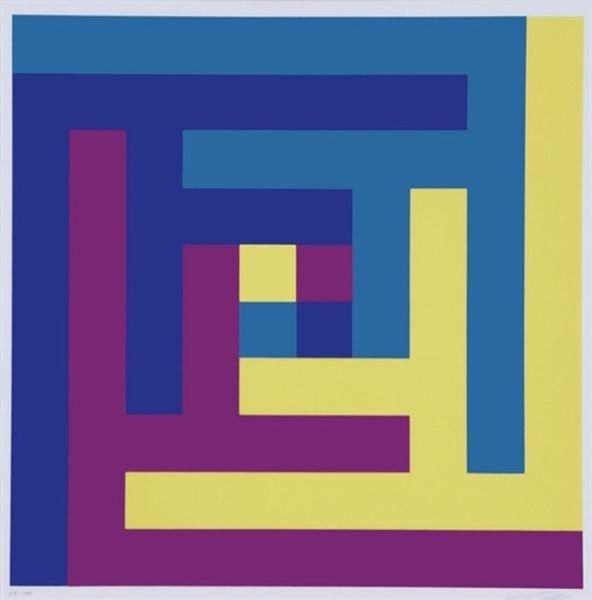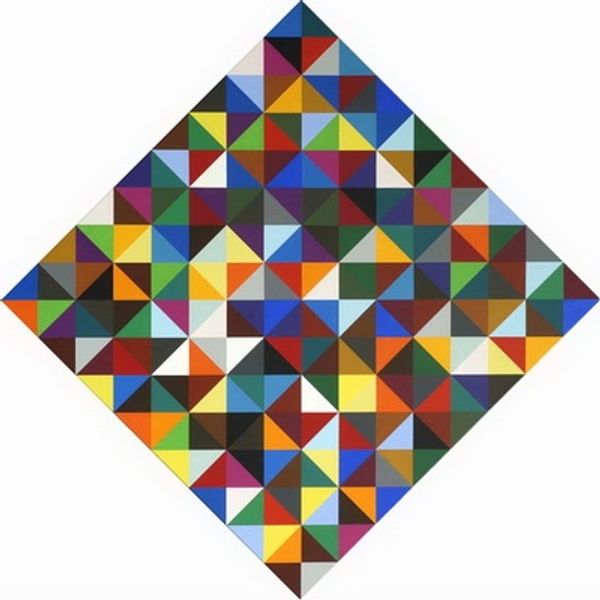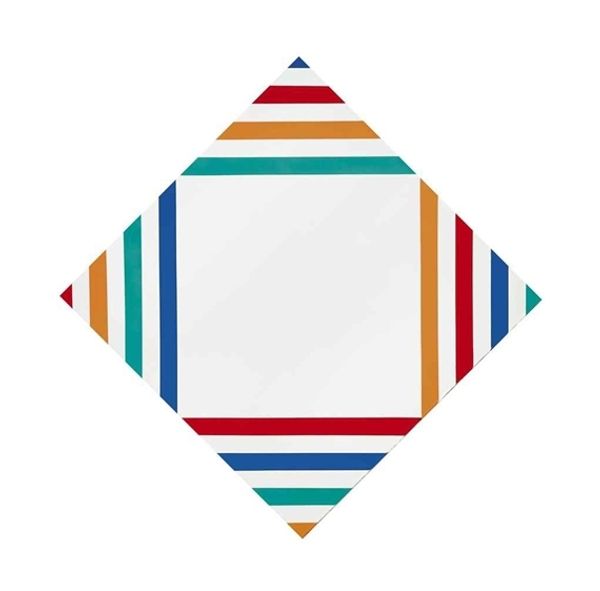
painting, acrylic-paint
#
concrete-art
#
painting
#
pattern
#
colour-field-painting
#
acrylic-paint
#
geometric pattern
#
geometric
#
geometric-abstraction
#
abstraction
#
modernism
Copyright: Max Bill,Fair Use
Curator: This is "Acht farben im horizontal-diagonal-quadrat", painted by Max Bill in 1965, acrylic on canvas. It is a rotated square canvas divided into a complex arrangement of geometric shapes, each painted a different color. Editor: Striking! At first glance, the sheer boldness of color catches the eye. The composition, although geometric, has a playful dynamism. It makes you want to look closer. Curator: Bill's works are deeply rooted in the principles of Concrete Art, where the artistic merit lies within the geometric structure itself, not in its representation of anything external. He believed that art should be constructed logically and mathematically. Editor: Indeed, there is an undeniable order here. The precise angles, the calculated placement of each color, it all speaks to that underlying structure. The interplay of these forms is what makes the artwork captivating. But what about the social implications? Concrete Art emerged, didn't it, from a desire to create art for everyone, to democratize aesthetics? Curator: Exactly. By rejecting traditional subject matter, artists like Bill aimed to create art that was universally accessible, not reliant on specialized knowledge or cultural background. The materials are also of note—acrylic, a relatively new medium then, embraced for its consistency and the intensity of its colors. These mass-produced colours were crucial for exploring universal color systems beyond the confines of older traditions. Editor: The unmodulated color fields force you to appreciate how form affects color perception, as form changes color and vice versa, making the interplay of angles and shape visually challenging. I mean, how the various angles intersect to generate visual movement that has an optical depth that draws you in. Curator: Absolutely. Bill sought to make visible the underlying order of the universe through mathematical forms, rejecting the emotional subjectivity so central to other forms of art, reflecting post-war society. Editor: Yes, there's a compelling marriage of logic and aesthetics here. Max Bill truly presents us with a self-contained visual system that transcends mere representation. Curator: Ultimately, considering all these points can change the way one thinks about painting, its goals, its methods, and its potential to reflect broader social intentions. Editor: Indeed. This piece rewards a close examination; its complexity unfolds gradually. The work is more than just color and shape, it’s a window into the artist’s perspective of the modern world.
Comments
No comments
Be the first to comment and join the conversation on the ultimate creative platform.
